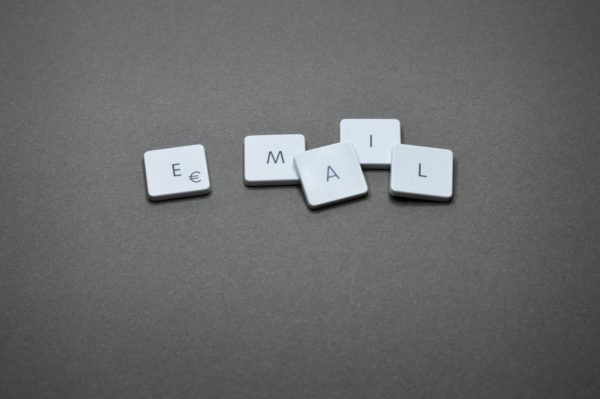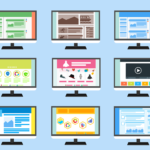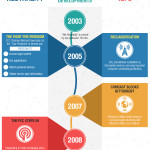Stellar Email Marketing Benchmarks
Improving email marketing campaigns is an ongoing process and a continual effort – only once you get to terms with that will you be able to boost your performance dramatically.
This is by no means depressing news – practice makes perfect and why would email marketing be any different than pretty much anything else in life?

It isn’t, but there are some common denominators that will make the process easier and more challenging.
First of all, it’s only natural that some industries are performing better than others. This is because of human nature rather than to the actual offer, so to define target audiences properly should help you get the best out of your campaigns.
As far as 2020 email benchmarks are concerned, Government open rates have increased from 19.79% last year to 30.5% this year, nonprofit open rates – from 20.39% in 2019 to 25.2% and education open rates – from 18.9% to 23.4%.Consumer packaged goods have increased to 14.5% open rates, while Automotive and Aerospace, Food, and Beverage and Retail open rates stand at 12.6%, 13.0% and 13.9%, respectively. More or less, the latter three are a standard and almost unchanged from 2019.
These stats need revision in light of the ongoing pandemic, which has seen food open rates skyrocketing due to the quarantine. Many marketers predict the trend will persevere, at least partially, because many people have only now learned about the benefits of online shopping. So, stay tuned and keep an eye on the developments.
As far as click-through rates (CRTs) are concerned, the highest achievers include Government, Real Estate, Design and Construction, and Agriculture, Forestry, Fishing and Hunting, in that order.
How to Boost Open Rates and CTRs?
It’s a valid question, but with no universal answer. Do not despair, however. Some ingredients of the recipe are universal, luckily, while others you will be able to concoct by following customers’ feedback.
The universal ingredients are, as follows:
- Relevant and eye-catching subject lines
- The right timing
- The right frequency
- Visible and clear CTAs
1. Relevant and Eye-Catching Subject Lines

Subject lines represent your message. They tell the recipient whether it is worth considering, let alone reading it. The finest of subject lines grab recipients’ attention and leave them wanting for more, which, in this case, is – getting to learn about your offer.
Some brands use catchy subject lines, others stick to the “business as usual” clause, others – a casual style, and so on and so forth. The tone of the subject line should be aligned with your business promise, your communication style and your offer. No more and no less. Consistency is the key.
A proper subject line announces the offer in a clear way, is no more than 41 characters in length, and is followed by a brief, to-the-point pre-header text and a relevant offer.
2. The Right Timing
The fate of an email is closely linked to its inbox placing – a sad but true reality. We need not underline how many emails people receive a day on average to drive the point home. Too many is the number, meaning that your message not only needs to stand out, but it also has to be well ranked.
Most people (9 to 5 workers, in particular) check their email in the morning (around 10 AM) and during lunch break (around 1 PM). Time your emails to arrive around these time slots for best results.
If your brand is international or serving different time zones, it is recommended to use an email marketing calendar so that you don’t forget to send different email batches.
3. The Right Frequency
Sending emails too frequently is never a good idea. Even if you have a stable customer base, if you start spamming them, they might reconsider their loyalties.
In addition, some emails are more welcome than others. Welcome messages (which you should make a habit of sending to each new subscriber), thank you messages, receipts, delivery and shipping information, and newsletters are almost universally welcome.
Newsletters, in particular, should be sent consistently so that recipients know when to expect them. While there are no general rules in this regard, some recommendations stand at either weekly, bi-monthly or monthly. Pick one routine and stick to it.
4. Visible and Clear CTAs
Calls to action (CTAs) are extremely important. Don’t ruin your efforts by slacking off in the end.
CTAs need to be clearly visible and stand out from the rest of the text. However, that doesn’t mean overdoing it. Do you remember those old email marketing campaigns that used fancy fonts, glitter, bolds and italics galore just to announce “click here now!!!!!!”?
Obviously that’s not the right way to go about CTAs. Most marketers use buttons, colored in either red or blue, because they naturally stand out from the rest of the message, which is – text. Opt for textual messages rather than image-heavy ones because the majority of the recipients access emails on their mobile devices. The emails you send, hence, need to be optimized (and so does your website, for that matter).
5. Update Your Mailing List Regularly
Last but not least, make an effort to update your email list. For starters, many people use multiple email accounts, just like you do, and over time, some of them get abandoned. Some people dedicate a single email address for marketing offers and do not appreciate too many offers from the same brand arriving too frequently.
Finally, people change addresses all the time due to various reasons. Sometimes, they find a better service provider, and sometimes they switch to more convenient options (desktop and web clients, for example).
Whatever the case, every marketer should regularly check and update their mailing list. This is especially important in terms of bounce rates, which will rise dramatically if there are many outdated addresses. Insights, as we all know, are crucial to marketing efforts, so they must remain relevant and clear.
Final Thoughts
Some tips have proven themselves to be helpful for certain brands, while others avoid them like the plague. The truth is there is no universal formula to stunning email marketing campaigns.
However, two things should be taken into consideration:
1. Sending shopping cart reminders (too many brands overlook them to their loss)
2. Asking for feedback (contrary to popular belief, customers actually appreciate being asked about the quality of the service)
Everything considered, marketing is all about communication. The better it gets, the more profitable your brand will grow. Use social media to share your email offer and heed the comments. Only by learning more about your audience will you be able to build your brand’s reputation in the long run.
















